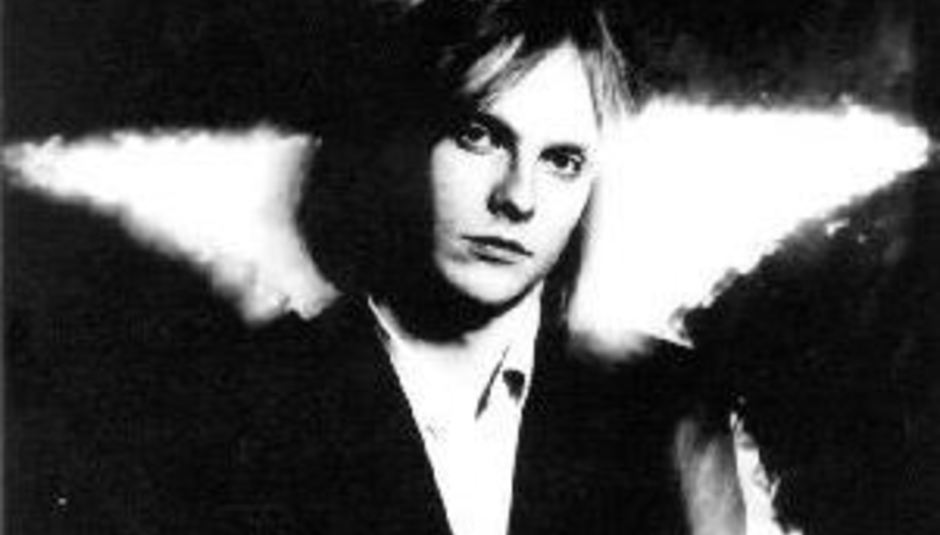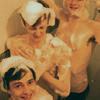I don’t have any personal anecdotes related to The Auteurs, which seems curiously apposite. I bought the first album, New Wave (1993), in Hong Kong (because I lived there). Back in the UK, amid the vogue for crustie and acid house, few teenagers seemed much taken by their precisely-crafted guitar and cello-led music; only a decade after the end of the band did I actually meet anyone with strong feelings for them. As such, my associations with their albums are maximally the product of Luke Haines’ lyrical talents: I fully believe in all of the starstruck characters from all of his songs on the first two albums, and all the grieving parents and abducted children on the latter pair. They’re perfectly written. None of the characters have any faces, is all...
This is a re-appraisal on the occasion of the publication of Luke Haines’ Bad Vibes: Britpop and My Part in Its Downfall. It’s curious that Haines would continue to link himself to that era, like someone who’d rather go down with the sinking ship and be remembered, than escape and forget. Perhaps masochism is the key to it all...? Haines was always significantly smarter (although prodigious would be too strong), and thrived on opposition to a club he longed to demolish, or to collectively become smart enough to make it worth his while joining. A year before Britpop, New Wave introduced The Auteurs with everything in place, and fully formed: James Banbury’s cello distinguished their sound from (say) The Smiths, or (contemporaries) Suede and The Wedding Present, but Haines’ hushed vocals dominated the band’s identity from the outset. Fifteen years down the line, New Wave hasn’t dated a day, which is remarkable, and it still takes the listener into Haines’ nocturnal garret bedroom, brooding over fame, revenge, and the mediocracy standing in his way.
New Wave, 1993 (8/10)
For a record so monomaniacal, there’s a mystery to New Wave. The monomania’s there in the titles: ‘Showgirl’; ‘American Guitars’; ‘Junk Shop Clothes’ ("...will get you nowhere" [i.e. in showbiz]); ‘Don’t Trust the Stars’; ‘Starstruck’. This doesn’t seem like a persona, or a conceit: Haines really craves fame, or maybe just a life of performance, being unable to fit in elsewhere. He invokes stand-up comics (that’s Lenny Bruce, dressed as Valentino, on the cover); one song seems him escape "a singing family"; the cast are models, child-brides, and so on. Presumably, singing about The Good Mixer and The Falcon, in Camden, would have been banal; wouldn’t have placed him in the sacred lineage of performers and vaudevilleans. Always hushed, but always laced with menace, his vocals make the songs a mythos, a set of late-night tales, and at the end of the day, Haines’ cracked actor will always be alone, however much the idiot faces applaud. For all the venom, all the killer hooks demonstrating how much he deserves fame, it’s on the final track (‘Home Again’) that Haines shows he can do sentimental ("it’s better than drugs / it’s goo-ood / to be in your home again..."), and then he delivers one of the best songs ever hidden on an album to counteract it ("No, they can’t [d’d’dng!] find me..."). In the quickfire lyrics, urgency and even paranoia comes to the fore, over urgent throbs of cello, and a guitar-break worthy of Johnny Marr...as well as that sense of mystery that remains to this day, about why Haines should be so conflicted: why’s he on the run in this song; why sing so clear AND so hushed the rest of the time; why play so melodically AND YET project such hostility?
Now I’m a Cowboy, 1994 (7/10)
With the Mercury Prize whisked away from him, Haines didn’t take a second to lick his wounds. Now I’m a Cowboy (1994) followed within twelve months, and its opening track was louder, faster, messianic in its declarations, and over in 2 minutes ("the Pope pronounced you as the Real One / Lazarus decided to rise"). Stylistically, and thematically, the progression was small, and logical: the long songs were longer, the short songs were shorter, the cello was higher in the mix, but Haines had established himself as the snide poet laureate of Bohemia, and had no reason to disguise his band as a conventional 90s rock group. Phil Vinall, who produced the first album, went off to work with a group of competent Smiths-copyists called Gene (or should that be Auteurs copyists?) but the follow-up remains impressive for sounding like it could have been made any time after 1990 (for the quality of production) and resonates with the listener at any time, too. As Kirk Hammett from Metallica almost put it (see Bad Vibes) Haines invented Baroque 'n'Roll (someone from the NME almost certainly coined that…). The idea of Bohemianism as a construct, as a superficial lifestyle choice, underlies the whole album, as an extension of its predecessor, and years after personally moving to Camden, the Georgian townhouses are still viewed through the net curtains of Haines’ lyrics: it’s hard not to imagine most of them containing the same ambitions and red velvet dreams he critiques, even if they’re actually full of young professionals or drunk students.
After Murder Park, 1996 (8/10)
Kurt Cobain had killed himself a month before The Auteurs second album came out, making it impossible to register the seismic shock to popular culture. Nonetheless, Nirvana’s (collective) act of commercial suicide had been to record In Utero with Steve Albini, setting a precedent that lasts to this day. It’s easy to make a case for After Murder Park (1996) as the most successful re-invention of a band, to benefit from Albini’s genius for capturing studio performances, especially with the emphasis on abrasive guitar sounds, and the rich tones of the cello. Kirk Hammett called the results ‘baroque Jesus Lizard’ and the latter are Albini’s favourite (and most cribbed) band. Strictly speaking, the biggest development was the addition of an organ on many tracks, but there’s more space between the strikes and stabs of the instruments. Haines largely dispensed with his old themes (unless you call misanthropy a theme) and explored the circumstances of a real ‘Unsolved Child Murder’ that took place near his home, when he was young. Blocked out for years, writing and recording the album was a very British exorcism or séance, for Haines – not macabre, but gloomy, and a little absurd, especially in the spritely, almost Belle & Sebastian-like track on which the children plan to find the body and resurrect it. Was this why Haines despised the happy-go-lucky folk of Britpop? Because they didn’t have real themes, or an unquenchable drive underlying their pursuit of the limelight that he (perhaps) couldn’t quite comprehend until now? On ‘Tombstone’, Haines pointed toward his next big project, albeit in code: "taking out the garbage / at the Columbia hotel / gonna blow this building up / Baader-Meinhof style". For those who didn’t pore over the Maker and NME in the mid-90s, the Columbia is where touring musicians still stay – as in the eponymous song by Oasis. Still, these homicidal anthems never lacked a perverse glee: ‘Dead Sea Navigators’ opens with all the hardcore tension of ‘Xmas Steps’ by Mogwai, but then an organ part lifts it up, and develops into a paean to "all the drinkers at the... Red Lion", much like Morrissey’s (post-Smiths masterpiece) ‘Now My Heart Is Full’ (from Vauxhall & I).
How I Learned to Love the Bootboys, 1999 (7/10)
The Baader-Meinhof concept album was an intriguing diversion: compact, but indulgent in its tunelessness, and perhaps bored Haines a little; he turned to shiny retro-pop, almost immediately after finishing his homage to the glamorous revolutionaries. How I Learned to Love the Bootboys (1999) was a daring return to form – never resorting to pastiche, Haines integrated the sound of 1970s glam, in the form of glossy synths, twinkling xylophones, doowop vocals, perfect pop hooks, and saccharine sentiments... but always caged in his elegant guitar lines, and hushed narration. Think Sonic Youth covering Madonna’s ‘Into the Groove(y)’ (to become a fetish club soundtrack) or Big Black foregrounding the sexploitation of ‘The Model’ by Kraftwerk; Haines was less aggressively parodic in his treatment of, say, The Ronettes, but showed the articulation between pop’s escapism and the sick world to be escaped from. ‘Lights Out’ describes the secret thrill of putting out school clothes before slipping under the covers to listen to the radio "with my new friend". The chorus is so exquisitely catchy, you almost miss the significance of its first line: "ah-woo / sugar baby / another night alone / a manic episode..." The title-track is even stranger, opening with a siren-sound, dub bassline, and odd assortment of electric twitters that resemble the Doctor Who theme; with its line about being "scared to dance" it’s a reminder that childhood values are in constant flux, and wildly disproportionate: why do those popstars look like aliens? Why does everyone worship them? What will happen if I don’t dance? As ever, the album’s intra-textualities are as important as inter-textualities: the bootboys of the late-1970s are reincarnated (historically) during Britpop: "how I learned to love the bootboys / round are way [sic]" is Haines’ snide reference to Noel Gallagher’s dyslexic songtitle from the previous year, but Blur & Elastica are just as much in his sights, with their DMs and fantasy Englishness. Intra-textually speaking, ‘Bootboys’ hints of a deal conducted in a carpark ("no mention of a name") but it’s on ‘School’ that Haines sings from the perspective of the child being abducted, over one of the most traditionally Auteurs arrangements (guitars and metronomic rimshots to the snare ticking away the seconds left to live...), with only a jolly Hammond organ lick at the end to add irony to injury, and suggest how the collective consciousness heals itself after witnessing horror: with the platitudes of popular culture.
Ultimately, Bootboys is a more successful and accessible collection of songs and stories than its recourse to glam-stylings might suggest – pop’s escapism is bad enough in its own day, without retro’s whitewashing of a time when "there’s no coloured section / in my record collection" (‘1967’), and this is no small point to make. Plus, The Auteurs wouldn’t be worth listening to, 15 years on (unlike very few others), if they didn’t have a deep love of pop, and a gift for it; Haines is going to hate this, but there’s a lot of OK Computer about his last record, and alongside Radiohead he’s written some of the great documentaries about what life was like in the 1990s, between all those raves, and for those who weren’t so optimistic about New Labour and Cool Britannia, having a stronger sense of history.
Bad Vibes: Britpop and My Part in Its Downfall is out now.























